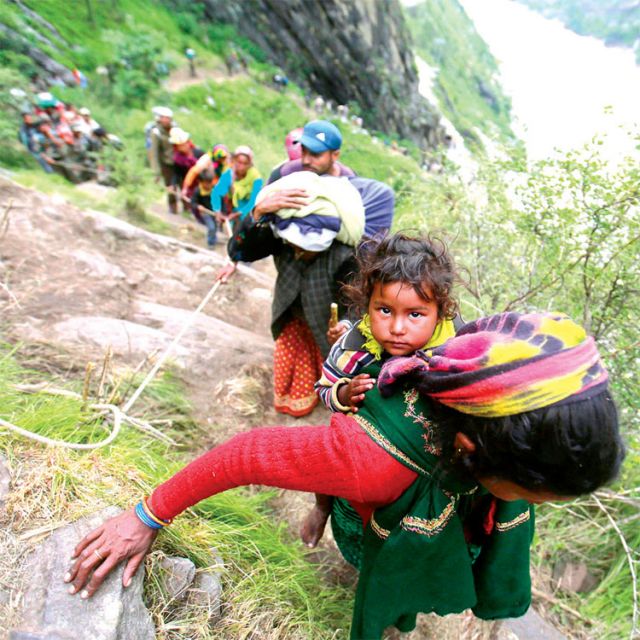“Now they are saying the number of those killed could be more than 1,000, but, seeing the devastation, I would say it (death toll) will be several thousands more,” Bishop John Vadakel of Bijnor, whose diocese covers the disaster-struck area, told Catholic News Service.
Vadakel spoke to CNS June 25 from Bijnor, after he was stranded for two days at Srinagar because of roads blocked due to fresh landslides.
A senior federal government official overseeing relief and rescue operations in the affected region was quoted by the Times of India June 25 as saying he would not be surprised if the final death toll were “anywhere between 10,000 to 15,000.”
“I could see many houses and buildings on the river banks covered with mud and silt,” said Vadakel.
Incessant rains in mid-June in the mountainous region triggered massive flash floods, and a reservoir burst.
Beginning June 16, three major rivers flowing down the Himalayas gathered momentum and washed away nearly everything in their paths.
Government forces airlifted more than 80,000 people, including thousands of Hindu pilgrims, stranded on mountain slopes with the roads and buildings washed out along the path to popular Hindu pilgrim temples.
“The situation is turning bad with more rains. Rescue workers are also getting stuck. Even our people are risking their lives in trying to save others,” said Vadakel.
While the evacuation has been centred around crowded pilgrim routes, Vadakel lamented that hundreds of villages had become inaccessible.
“Nobody knows the fate of such remote villagers,” he said.
Rekha Shetty, CRS director for disaster management in India, said aid workers and agencies were concerned about the indifference of government officials to the suffering of the local people while they focused on pilgrims from outside the state.
Shetty told CNS that the agency is giving unconditional cash grants of $82 — more than a month’s wage to a labourer — to 500 families as an emergency measure.
“Many houses have been not only washed away but even buried under mud,” she said. “Shelter will be our focus in long-term rehabilitation.”
Fr. Pius Philip, social service director of Bijnor diocese who had been travelling through the area, told CNS, “The situation is really awful.”
Although the Bijnor diocese has only limited presence in the mountain region, he said all the 70 priests, nuns and lay Church workers had been pressed into in relief work.
While five Church centres, including schools, were being used as relief centres with the support of Caritas India, Philip said other Church workers were moving out to remote villages.
Fr. Tomi Thomas, director of the Catholic Health Association of India, told CNS that Catholic hospitals had been asked to prepare relief teams and were awaiting government permission to enter the area.
“Right now, mobility is a problem. The government is now relying on helicopters to rescue people. As soon as we get government clearance, our teams will proceed to Uttarakhand,” said Thomas.


